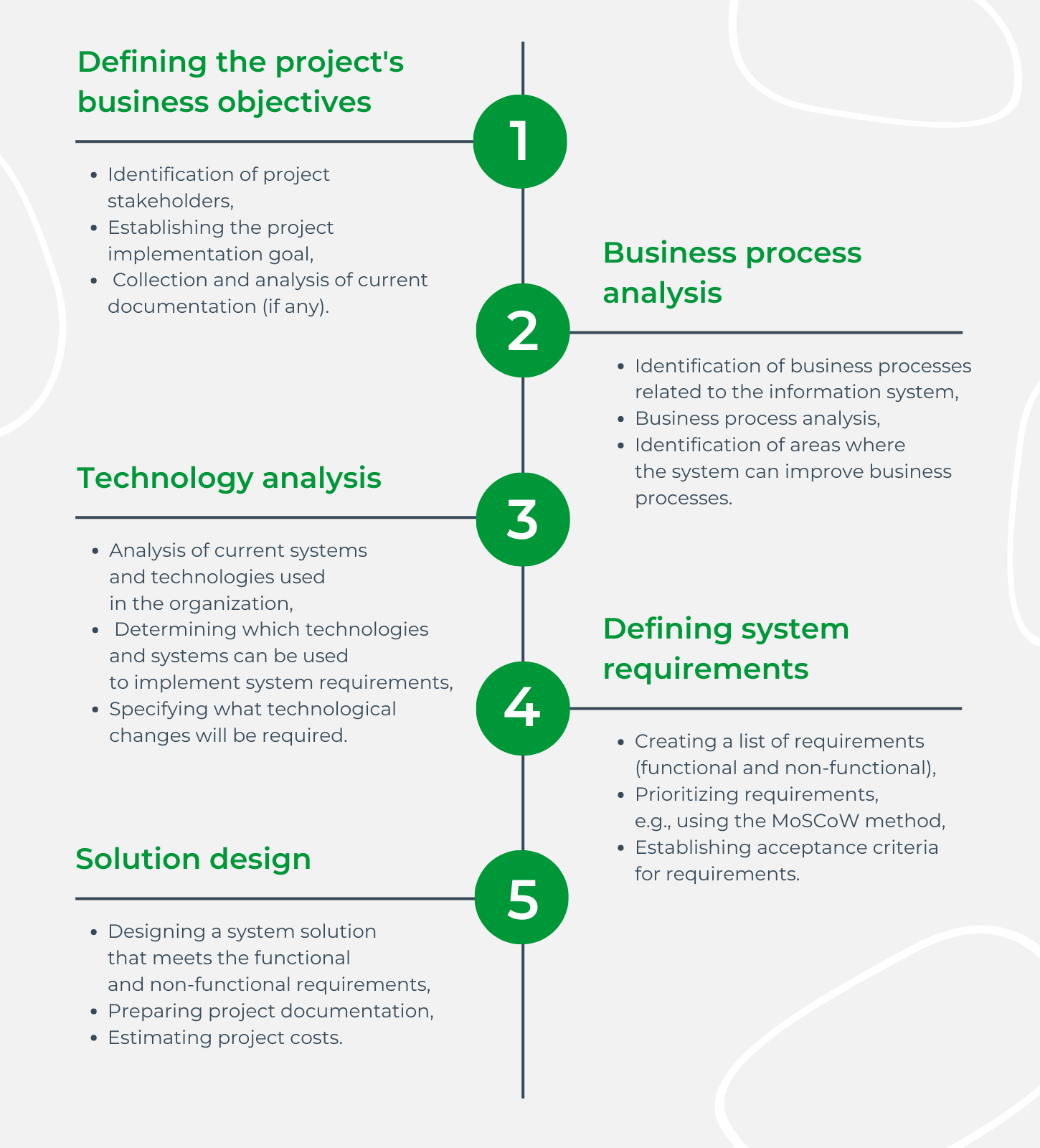
TABLE OF CONTENTS:
Considering the vitality of IT systems in the modern business world, is there a recipe for success that any size organization can use? An appropriately carried out business analysis is one of the fundamental components of any IT project that will affect its fate. How come? We will delve into this here.
New systems or upgrades to existing ones can deliver significant benefits, but their effectiveness is heavily influenced by the project’s course and the competency of the team working on it. Collaboration between experts from different fields (business analysts, designers, UX designers, developers, testers) has become commonplace. While no single definition of business analysis exists, the simplest form works best for IT projects.
IT business analysis consists of of poring over the customer’s needs and requirements for the proposed solution, then converting them into specific tasks for developers. During this stage of the project development process, IT teams and the business community are connected. As part of the analysis, we gather information about the current problems and challenges the client faces. However, we also note what works efficiently and effectively.
This is so that all these aspects are taken into consideration when designing a new or improved IT solution. We then determine the goals the client wants to accomplish by implementing the new system. We create a preliminary project implementation plan, including functional and non-functional requirements and usage scenarios. Hence, business analysis is critical to spotting potential risks early on, mitigating those risks, predicting additional costs, and planning integrations and infrastructure, all factors that influence the quality and price of the final product. An essential part of business analysis is the interviewing, observation, infrastructure, and documentation analysis.
According to the Standish Group Annual CHAOS 2020 report, 66% of technology projects (based on an analysis of 50,000 projects worldwide) fail wholly or at least partially. This is usually due to a lack of thorough analysis of business requirements, as it is on the basis of this analysis that IT systems are designed. In the absence of thorough analysis, a new or improved system might be ineffective or even completely useless in the company’s day-to-day operations since it might not meet client and user expectations:
A failed IT project can result in the loss of customers, business partners, and business partners’ trust, depending on the objective and target audience. On top of all that, companies may incur costs associated with error fixes and the extra amount of work to bring the system to proper functionality. Employees who have invested a great deal of time and effort in a project can have a negative reaction to its failure, and their morale could be shattered.
As a technology partner that implements IT projects daily, sound business analysis is of the utmost importance to us. Throughout our online workshops, we strive to engage the client and make the documentation easily understood and relevant. We utilize a variety of techniques during meetings to better understand stakeholders’ needs and requirements, including stakeholder interviews, group discussions, workshops, and document analysis. Having a clear understanding of why and for whom the application or system is being developed allows the client to feel confident. It is at this point that work should commence. It is not our goal to just “hand over the project” or to “make the application.” In every case, we ask what the business goal is and what the expected results of implementing the system are.

Prior to commencing a project, we conduct a series of meetings to determine the client’s logic, processes, and requirements. Our next step is to analyze the gathered knowledge so that we can clarify what the client really needs. This will enable us to avoid potential ambiguities and misunderstandings. Based on the collected business requirements, we design the system or application, taking into account technical and functional aspects.
Several factors determine the cost and duration of an IT business analysis, including the project’s size, its complexity on both a business and technical level, the frequency with which customer requirements change, and the level of knowledge and experience of the company responsible for its implementation. Keep in mind, however, that business analysis avoids costly mistakes in IT projects, preventing the risk of implementing a solution that fails to meet the customer’s needs.
IT project success begins with business analysis, and its cost is usually included in the quote for the total system.
